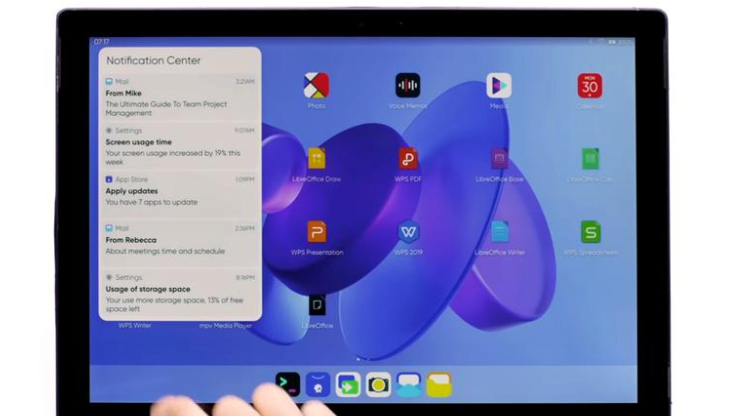iPadOS, Apple’s tablet operating system, derived from iOS, managed in a fairly short time to demonstrate that tablets without Windows can also be used for productivity, not just for consumption of multimedia content. Its success has encouraged Microsoft to accelerate the development of Windows 10X, which will also compete with Google’s Chrome OS. However, for those who prefer a Linux operating system, there will soon be an alternative called JingOS, clearly inspired by Apple’s iPadOS.
JingOS is inspired by Apple’s iPadOS operating system
In fact, those behind the JingOS project do not even avoid comparing their operating system with that on iPad tablets. The interface seems to be clearly inspired by Apple. The advantage of JingOS is that it will be able to run on both PCs and tablets, while the fact that it is based on Linux, makes it an open operating system, which can be modified to the liking of users. In fact, the source code is available on GitHub and can be adapted to personal needs by those who have the necessary knowledge.
Basically, JingOS in turn uses another Linux distribution as a base: Ubuntu 20.04, along with the KDE v5.76 interface and Plasma Mobile 5.20. Over time, Plasma Mobile could be replaced with a proprietary framework: Jing Desktop Environment.
JingOS will receive its first public release on January 31 and will only be available in an x86 version. The first two compatible devices will be Huawei MateBook 14, a laptop, while on the tablet side, it can be installed on Microsoft Surface 6. In 2021, probably with framework upgrades, support will be added. for processors on ARM architecture.
In addition to the operating system offered for installation on other devices, the JingOS team plans to launch a tablet called JingPad C1, which will hit stores in June 2021, at about the same time as JingOS 1.0, which is scheduled to launch the final version on 30 June.









Leave a Reply